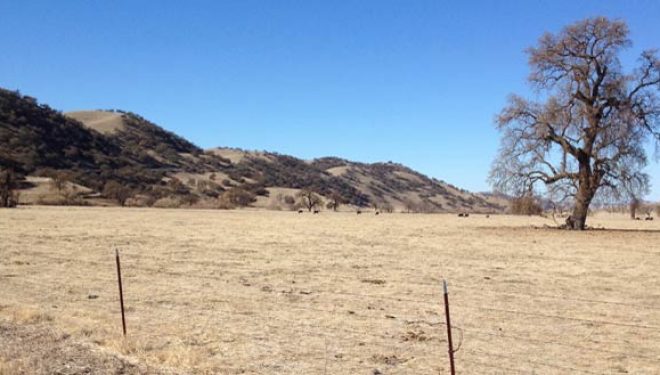
By John Sittler
Several Colorado water and governmental agencies are in the process of implementing a wide variety of money-for-water strategies in hopes of protecting the state and its water users from increasing drought and water scarcity concerns. Although these programs appear to have wide-ranging support at the bureaucratic level, it is unclear if actual water users will match the same level of buy-in. These programs represent the latest water conservation measures throughout the state, and the entire Colorado River Basin, as water users wrestle with looming water shortage issues.
Groundwater Retirement
Last year the Colorado General Assembly passed Senate Bill 22-28 which appropriated $60 million to pay groundwater users to “retire” (permanently cease diversion) of irrigation water wells in the Upper Rio Grande and Republican River Basins. The state earmarked funding for this project under its “Groundwater Compact Compliance Fund.” The money is intended to ensure the state meets various obligations with other states (primarily New Mexico and Nebraska). Under the bill, irrigators must have used the wells at least five years between 2009 and 2022 and pumped a minimum of 50 acre-feet per year. The bill contemplates a base payment of $250,000 per irrigated quarter section, in addition to $2,000 per acre-foot, with a total cap of $650,000 per quarter section. The focus on quarter sections reflects the General Assembly’s intent to retire large-capacity wells from large, multi-well farms, not smaller family operations.
Specifically in the Upper Rio Grande Basin, the Rio Grande Water Conservation District (District) recently increased the per acre-foot compensation to $3,000 in an attempt to entice more users to join the program. The District has a stated goal to retire 40-50 quarter section irrigated circles, which would save 11,000-15,000 acre-feet of water per year. Along with the compensation increase, the District also implemented requirements for users to revegetate the land and help native plants take root. Irrigators may use up to 1.5 acre-feet per acre for the first three seasons of “retirement” to assist with this revegetation. The additional water will likely be critical to bolster native vegetation in the high desert climate of the San Luis Valley.
The District closed on the first of two retirement contracts in early October, resulting in payments of $1.2 million to two irrigators. The second round of applications is currently open and runs through December 29, 2023. The Trinchera Groundwater Management Subdistrict, which is part of the Trinchera Water Conservancy District, recently raised concerns that its users should also be eligible for SB 22-28 funding. The Rio Grande Conservation District noted that two pending applications from Trinchera users will be considered in the current funding cycle. However, it is unclear at this point if the retirement of wells in the Trinchera area will actually contribute to the state’s goals to reduce groundwater use in the San Luis Valley. The Rio Grande Conservation District currently has almost $29 million remaining from its original $30 million appropriation under SB 22-28.
Nevada
The State of Nevada is currently implementing a similar pilot program to retire wells in an effort to support existing surface water rights. Long-term groundwater pumping in the state has begun to affect surface stream flows, particularly in the last 20 years of drought. Six Nevada water entities recently applied to the state requesting $65 million in funds to retire wells under a program similar to Colorado’s. However, the state currently only has $25 million for the “water buyback” program from federal American Rescue Plan funds. Therefore, this is essentially a pilot program to gauge interest. If Nevada users support the project, the state may make more money available to the program in the future. Like Colorado, the state envisions the program as attractive to farmers nearing retirement, those transitioning to more efficient irrigation practices, and all water users facing the threat of widespread curtailment in the face of continued drought.
Water Users Study
However, a recent study revealed an extreme reluctance by farmers and ranchers to join these voluntary programs. The Western Landowners Alliance partnered with the University of Wyoming to survey more than 1,100 Colorado River Basin water users, resulting in the “Agricultural Water User’s Preference for Addressing Water Shortages in the Colorado River Basin.” The study received almost half of its responses from Colorado, although every basin state except Nevada was represented in the study. The study revealed a near-unanimous concern for looming water-shortage-related changes in water policy and new constraints on water use. Yet more than 85 percent of respondents do not trust water agencies and are reluctant to include their water rights in programs run by far-off bureaucracies. There are likely political undertones in many of these responses, but the study demonstrated a clear preference for local programs and a clear distrust of multi-state options.
More than half of the respondents said they would undertake programs to improve efficiency, and thereby reduce water use if such programs were fully funded. But less than 10 percent of Upper Basin respondents and less than 20 percent of Lower Basin respondents would participate in any demand management program, such as the federal System Conservation Pilot Program, if it would require them to fallow the same field for multiple years.
Purchase of Existing Rights
In western Colorado, the Colorado River District is attempting to purchase extremely senior hydropower generation water rights from Xcel Energy. This unique strategy in which a quasi-governmental entity outright purchases water rights from a private company in furtherance of conservation goals may offer a blueprint for future conservation-focused transactions in the future.
Xcel Energy owns a senior 1902 water right for 1,408 c.f.s. for its Shoshone hydropower plant in Glenwood Canyon, just east of Glenwood Springs, Colorado. In addition to providing power for 15,000 users, the location of this right provides numerous recreation, fishery, and water quality benefits to the Colorado River. The hydropower right is non-consumptive, meaning that it provides benefits to both Xcel customers and downstream users by virtue of that water being available below Shoshone at all times, whether through free river conditions or when that water right is calling. The Shoshone call limits non-augmented junior water rights development above the plant while improving water quality (through dilution) and supporting flows in the Colorado River all the way to the Utah border.
The River District, in collaboration with 17 local governments and municipalities, has been working for more than 20 years to preserve the flows at Shoshone for the benefit of the Colorado River. This work resulted in a current agreement whereby a “phantom” call is in place for the Shoshone rights even when the plant is offline for maintenance or repair. The River District and its partners are concerned that Xcel Energy may one day retire the plant or sell the water rights to Front Range entities, thereby depriving the western slope of this critical flow maintenance water right.
Historically, Xcel has not been interested in selling its Shoshone water rights, although recent discussions have resulted in a plan by which the River District would purchase the rights and then permanently lease them back to Xcel for as long as it desired to operate the Shoshone hydropower plant. The current estimated purchase price is $98.5 million, which the River District would acquire through its own funds, local governments, the state of Colorado, and the federal Bureau of Reclamation. Specifically, the River District earmarked $20 million from a recent property tax increase and believes it can obtain an additional $10 million from local governments and municipalities. The River District plans to apply for $49 million in Bureau of Reclamation funding that is available as drought mitigation funds from the Inflation Reduction Act, and a final $20 million from the Colorado Water Conservation Board’s (CWCB) annual water projects bill, which is funded through energy severance tax revenues.
Project proponents are hopeful the sale will close by the end of 2026. Before that time, Xcel Energy must obtain certain approvals from the Colorado Public Utilities Commission. The River District would further like the CWCB to obtain an additional beneficial use for the Shoshone rights for instream flows. Instream flow rights are unique in Colorado in that they can only be claimed by the state, and they allow the state to place a call to protect the natural flow and environment of a specific stretch of river. The instream flow use for the Shoshone rights would ensure the river operates as historically even in Xcel elected to no longer operate the hydropower plant.
Conclusion and Implications
Flows in the Colorado River Basin have steadily declined over the past several decades as the region experiences less precipitation, higher temperatures, and greater water demands through increased population. Water managers are constantly looking for solutions to the coming crisis, with a recent push to simply pay users to forego the exercise of their rights. Although expensive, many states and water entities believe the cost of these programs will be far lower than the impacts of widespread curtailment and water shortage. At least for now, there appears to be a divide between rural water users and bureaucratic water entities, but there is a clear consensus on the need to do something. Creative programs, such as those detailed above, may offer future water solutions for an ever-growing, and ever-drying, West.




